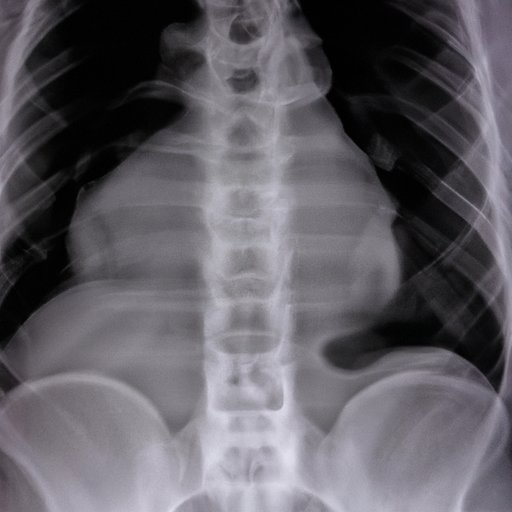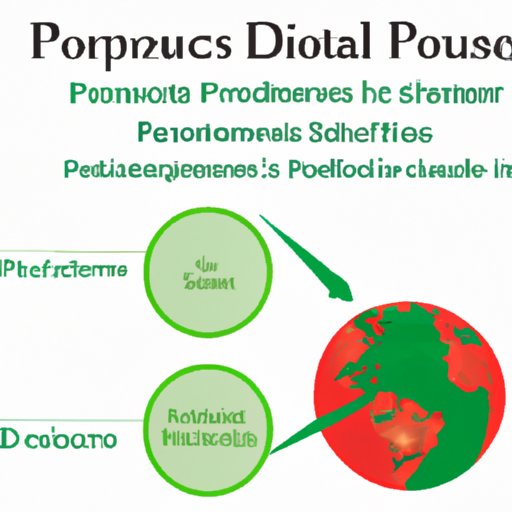
Introduction
Potts disease, also known as spinal tuberculosis, is a rare form of tuberculosis that affects the spine. This disease can lead to severe health complications, including paralysis and even death. It is important to address this issue to raise awareness and provide individuals with the necessary knowledge to recognize the symptoms and seek treatment.
In this article, we will provide a comprehensive guide to Potts disease, exploring the signs and symptoms, diagnostic tests, and available treatment options. We will also discuss preventive measures to avoid Potts disease and management techniques to avoid the worsening of symptoms. Additionally, we will explore the impact of Potts disease in developing countries and possible solutions to lessen the burden on affected communities.
A Comprehensive Guide to Potts Disease
Definition of Potts Disease
Potts disease, also known as spinal tuberculosis, is a rare form of tuberculosis that affects the spine. Tuberculosis is caused by bacteria known as Mycobacterium tuberculosis and typically affects the lungs. However, in rare cases, tuberculosis can also affect other parts of the body, including the spine.
Signs and Symptoms of Potts Disease
The signs and symptoms of Potts disease can vary depending on the severity and location of the infection. Common symptoms include:
- Back pain
- Fever
- Night sweats
- Weight loss
- Fatigue
- Difficulty standing and walking
- Numbness or tingling in the arms and legs
As the disease progresses, it can lead to severe health complications, including paralysis.
Diagnostic Tests for Potts Disease
Diagnostic tests for Potts disease typically involve a combination of imaging tests and laboratory tests. A doctor may order an MRI or CT scan to examine the spine for signs of infection. Additionally, they may order a blood test or a biopsy to confirm the diagnosis of tuberculosis.
Treatment Options for Potts Disease
Treatment for Potts disease typically involves a combination of medications and surgery. Medications are used to kill the bacteria causing the infection, while surgery is used to stabilize the spine and prevent further damage.
It is important to seek treatment early to prevent further damage to the spine and other body systems.
Potts Disease: How to Prevent and Manage This Serious Form of Tuberculosis
Preventive Measures to Avoid Potts Disease
Preventive measures to avoid Potts disease include maintaining good hygiene practices and avoiding close contact with individuals who have tuberculosis. Additionally, individuals should receive the Bacillus Calmette-Guerin (BCG) vaccine, which can provide protection against tuberculosis.
Management Techniques to Avoid the Worsening of Symptoms
To manage Potts disease and avoid the worsening of symptoms, individuals should take their medications as prescribed, maintain a healthy diet, and engage in regular physical activity. Additionally, it is important to avoid activities that may further damage the spine, such as heavy lifting or high-impact sports.
Possible Complications Due to Potts Disease
If left untreated, Potts disease can lead to severe health complications, including paralysis and even death. It is important to seek treatment early to prevent further damage to the spine and other body systems.
Understanding Potts Disease: How It Affects the Spine and Other Body Systems
Understanding the Mechanism of Infection
Potts disease is caused by the bacteria Mycobacterium tuberculosis and typically occurs when the bacteria spreads from the lungs to the spine. The bacteria can enter the bloodstream and travel to other parts of the body, leading to the development of tuberculosis in other body systems.
Location and Impact of Potts Disease in the Spine and Other Body Systems
Potts disease typically affects the vertebrae in the spine, leading to the deterioration of the spinal column. This can lead to severe back pain, difficulty standing and walking, and even paralysis. Additionally, if the bacteria spreads to other body systems, it can lead to severe health complications, including kidney failure and meningitis.
Ways to Prevent and Avoid the Severe Effects of Potts Disease in Other Areas of the Body
To prevent the severe effects of Potts disease in other areas of the body, it is important to seek treatment early and take medications as prescribed. Additionally, individuals should maintain good hygiene practices and avoid close contact with individuals who have tuberculosis to prevent the spread of the disease.
From Diagnosis to Recovery: The Journey of a Potts Disease Patient
The Importance of Early Diagnosis
Early diagnosis of Potts disease is crucial to prevent further damage to the spine and other body systems. It is important to seek medical attention if you experience any symptoms of Potts disease, such as back pain or difficulty standing and walking.
The Process of Managing Potts Disease Until Recovery
The process of managing Potts disease typically involves a combination of medications and surgery. It is important to take medications as prescribed and engage in physical therapy to help strengthen the spine. Additionally, it may be necessary to undergo surgery to stabilize the spine and prevent further damage.
The Challenges and Needs of Potts Disease Patients During Recovery
Individuals recovering from Potts disease may face challenges such as limited mobility and loss of independence. It is important for family and friends to provide emotional support and assistance during the recovery process.
Exploring Traditional and Alternative Treatments for Potts Disease
Commonly Used Traditional Treatments
Traditional treatments for Potts disease typically involve antibiotics and surgery. These treatments are effective in killing the bacteria causing the infection and stabilizing the spine to prevent further damage.
Alternative Treatments for Potts Disease
Alternative treatments for Potts disease include chiropractic care, acupuncture, and herbal medicine. However, these treatments have not been proven to be effective in treating Potts disease and should only be used in conjunction with traditional treatments.
Benefits and Disadvantages of Different Treatment Options
The benefits of traditional treatments for Potts disease include their effectiveness in killing the bacteria causing the infection and preventing further damage to the spine. The disadvantages include the potential side effects of medications and the invasiveness of surgery. Alternative treatments may have fewer side effects, but their effectiveness in treating Potts disease is not proven.
Potts Disease: A Rare but Devastating Form of Tuberculosis
How Potts Disease Differs from Other Forms of Tuberculosis
Potts disease differs from other forms of tuberculosis in that it affects the spine and can lead to severe health complications, including paralysis and even death. Other forms of tuberculosis typically affect the lungs and may have less severe health complications.
The Rarity of Potts Disease
Potts disease is a rare form of tuberculosis, affecting less than 1% of individuals with tuberculosis. However, it is important to be aware of this disease to seek treatment early and prevent further damage to the spine and other body systems.
Importance of Continuing Research on Potts Disease
Continuing research on Potts disease is crucial to develop new treatment options and improve the overall understanding of this rare form of tuberculosis. Additionally, research can help raise awareness and provide individuals with the necessary knowledge to recognize the symptoms and seek treatment early.

The Social and Economic Impact of Potts Disease in Developing Countries
The Prevalence of Potts Disease in Developing Countries
Potts disease is more prevalent in developing countries, where access to healthcare and proper treatment may be limited. Additionally, factors such as malnutrition and crowded living conditions can contribute to the spread of tuberculosis.
The Social and Economic Burden of Potts Disease on Affected Communities
Potts disease can have a significant social and economic burden on affected communities. Individuals affected by the disease may be unable to work or care for themselves, placing a strain on family and community resources. Additionally, the cost of treatment can be a significant financial burden for families and communities.
Possible Solutions to Lessen the Impact of Potts Disease in Developing Countries
To lessen the impact of Potts disease in developing countries, it is important to improve access to healthcare and treatment for individuals affected by the disease. Additionally, preventative measures such as improved hygiene practices and vaccination programs can help prevent the spread of tuberculosis.
Conclusion
Potts disease, a rare form of tuberculosis, can have severe health complications and impact the spine and other body systems. It is important to seek medical attention early if you experience any symptoms of the disease. Additionally, preventative measures such as good hygiene practices and vaccination programs can help prevent the spread of tuberculosis. By raising awareness and taking necessary precautions, we can work together to prevent the further spread of Potts disease and improve the overall health of affected individuals and communities.
Remember, early detection and treatment can make a huge difference in the outcome of this rare form of tuberculosis.
Let’s take action and spread awareness of Potts disease to protect ourselves and our loved ones.





